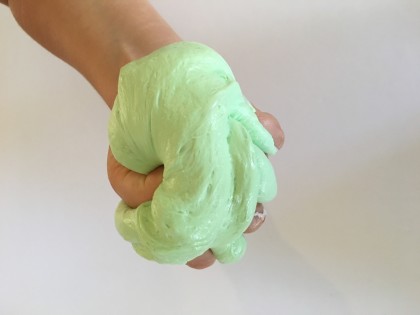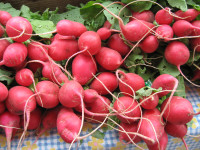One of the big trends hitting the Internet is slime, a craze that has attracted millions kids to YouTube videos. A mix of Elmer’s Glue (some towns are now suffering from Elmer’s Glue shortages!) and other ingredients, slime has become so popular (and distracting) that some schools have banned it.
Flowery School fourth grader Isabelle Sinha (pictured) loves making, experimenting and playing with slime. For those of you who have not encountered slime, it’s not-wet but feels wet, is slippery, squishy, stretchy and of various textures, colors and compositions. For Isabelle, slime is a perfect complement to her interest in science, and concocting new variations at home has become a bit of a hobby.
The basic ingredients of slime include Elmer’s Glue (both white and/or clear) and an “activator”. Depending upon how the ingredients are mixed, and other ingredients are added, the end result varies.
Slime will not stick to hands, plastic or glass surfaces, but will stick to paper and cloth. Once it’s made, keep it in a covered container or it will dry out and lose its flexibility and sliminess.
Here are some of Isabelle’s slime recipes, though Isabelle-the-scientist suggests that a bit of “trial and error” rather than measured amounts is unavoidable.

White Jiggly Slime
Elmer’s White Glue
Water
Food coloring (optional)
A pinch or two of baking soda
An Activator: Either contact lens solution (just a little, added slowly while mixing, until the slime is not sticky) or a mixture of borax and water.
Fluffy Slime
Same ingredients as above except uses generous dollops of cheap shaving cream instead of water.
Butter Slim:
Same ingredients as above, except instead of shaving cream or water use Daiso or Model Magic Clay.
Glitter Clear Slime
Use Elmer’s Clear Glue, not White. Otherwise, all ingredients are the same, plus add glitter.
Fluffy-Jiggly Slime
Uses the same ingredients, but combines both shaving cream and water.








Be First to Comment